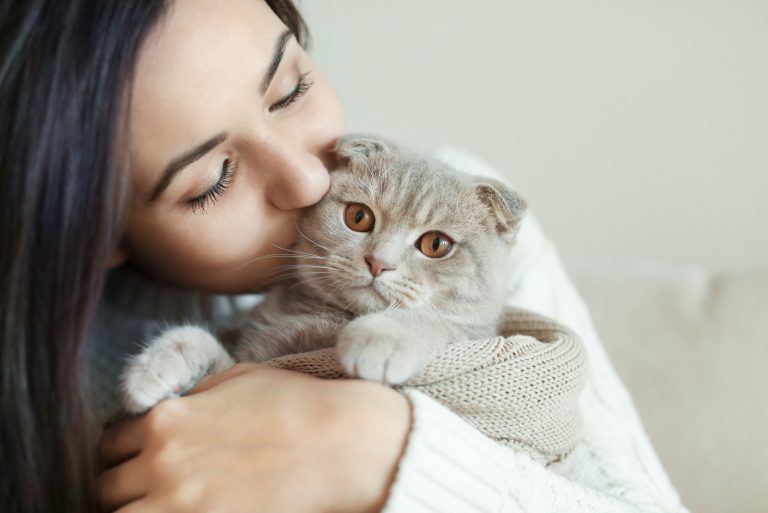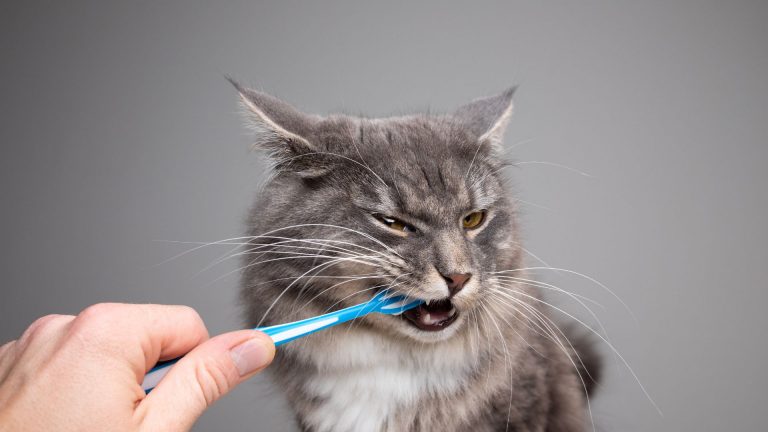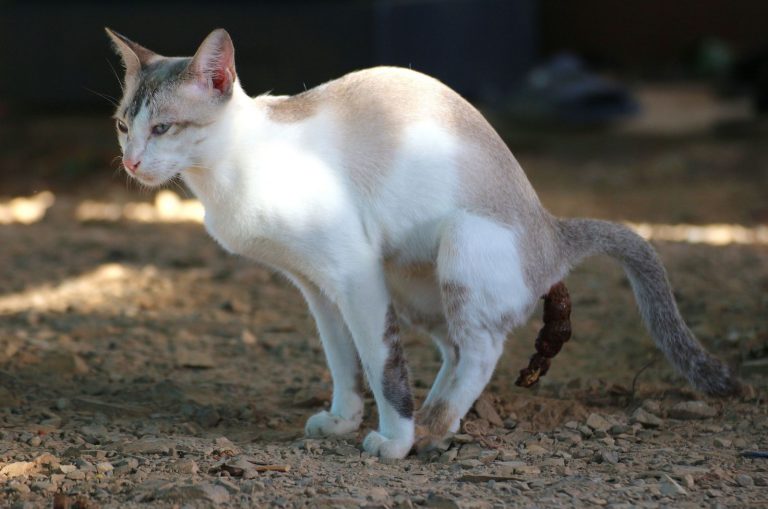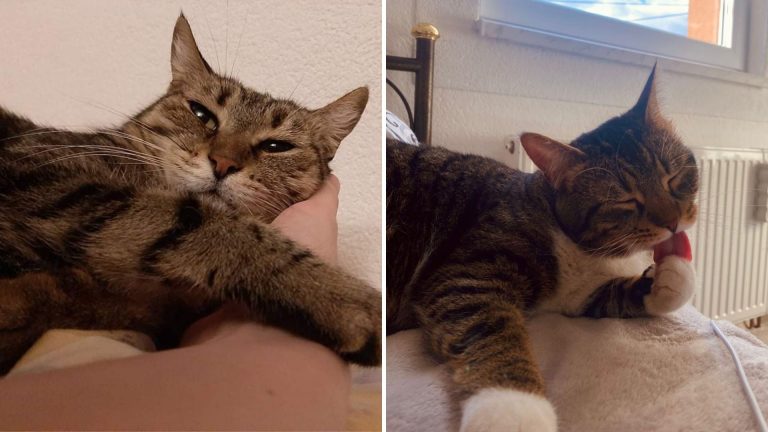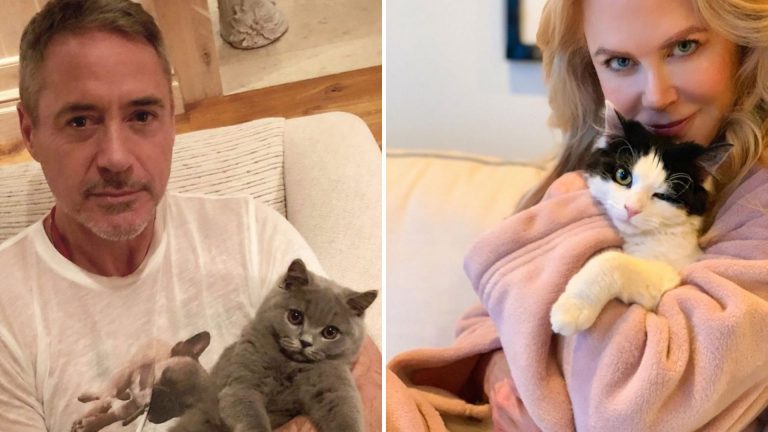Tailless Cat Breeds You Must See
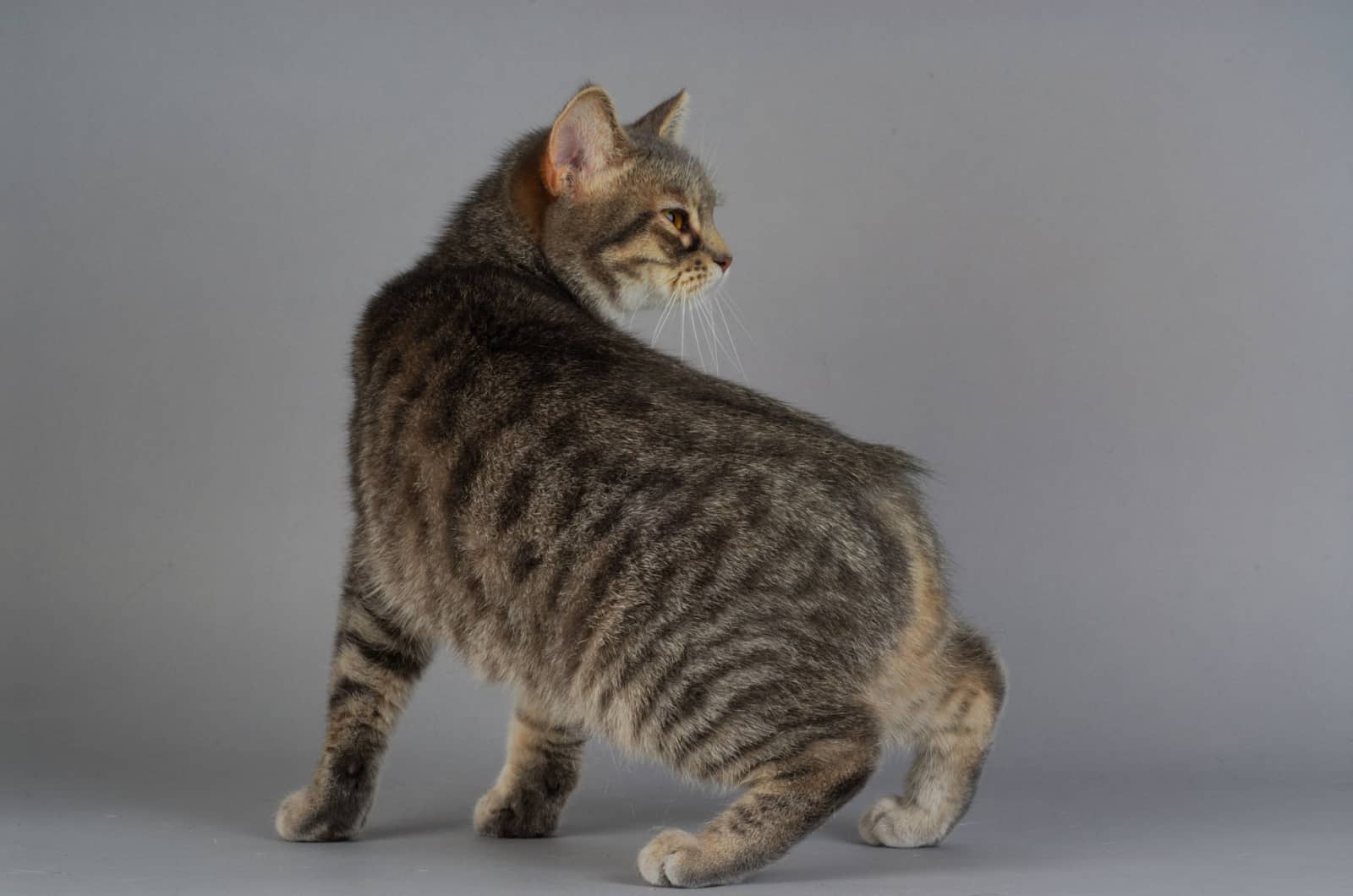
Check out the following 10 cat breeds with no tail and see if there are any differences in their personality traits, health, and care guides.
According to some legends, the Manx cat had its tail severed because it was tardy for Noah’s Ark’s departure and had its tail trapped in the door. Some people claim that this legend refers to the Cymric, which is also a cat breed with no tail.
Whichever it is, we know that both of these, and a few other cat breeds, are indeed tailless. What does this look like, and are there any health conditions associated with a lack of a tail in cats? Continue reading and find out.
Cat Breed With No Tail: The Manx
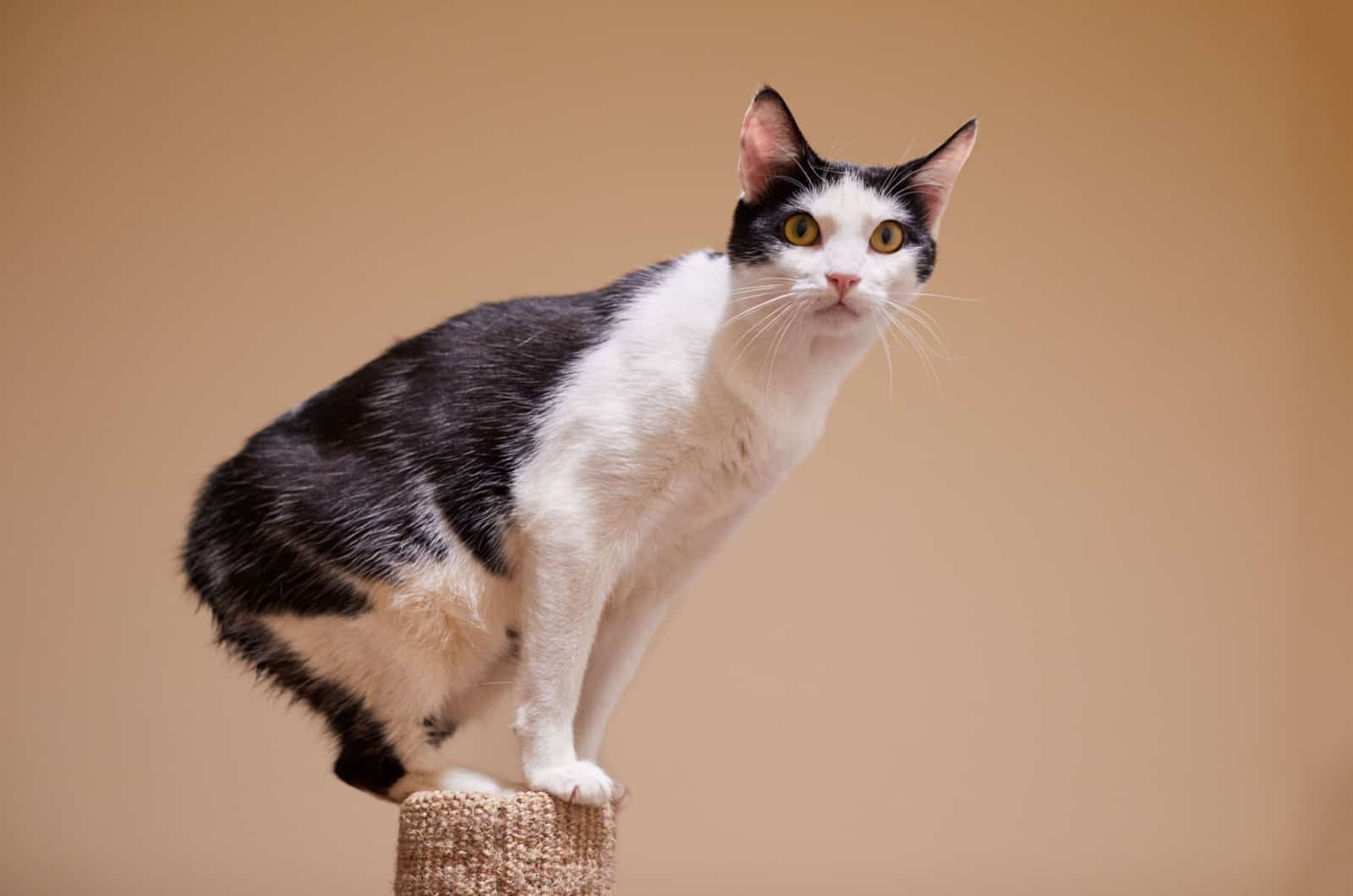
As a result of a naturally occurring genetic mutation that causes short tails in cats, the Manx was, for centuries, the dominant cat breed on the British Isle of Man.
Known for its ancient hunting techniques, the Manx has been a favorite cat breed of sailors and farmers for as long as it has existed; some even think they resemble the British Shorthair cats a bit.
According to the Cat Fanciers Association (CFA), Manxes can have both long hair and short-haired coats, but they all appear as short coats regardless of their actual coat length. Other registries from Europe and Asia, for example, list long-haired cats as another breed, known as the Cymric.
| Size | medium |
| Average Weight | 8 to 12 lbs. |
| Average Height | 7 to 12 inches |
| Physical Characteristics | short, round body, long back legs |
| Personality | sweet, curious, playful |
| Origin | Irish Sea |
| Average Lifespan | 9 to 14 years |
More Info About The Manx Breed
First of all, Manx cats are round all around. Their head, eyes, and ears are round in shape. Also, their hind legs are notably longer than their front legs, which gives their entire body shape a round appearance.
The Manx is defined as “rabbit-like” for its behavior and fashionable looks. This breed of cat moves its hind legs in unison, giving it a sort of hare-like gait.
The Manx’s thick, double coat allows for healthy shedding, but it can also tolerate warm climates and water very well.
In fact, Manx cats can be found in all shades and specimen combinations, with a pure white coat. Shade-tipped Manxes are the rarest, and orange, tabby, and tortoiseshell cats are the most common.
It is recognized as a short-haired cat, but there are long-haired Manx cats with the same genetic makeup. How they are treated is the subject of some debate.
The Manx cat’s tail loss, combined with the Manx cat’s short body length and geographical isolation, allowed dominant genetic traits to overtake some of the cat population in the Isle of Man.
Some Manx cats might still have short tails and are known as ‘stumpies’, while a few have typical, full-grown tails, which are known as ‘longies.’
Manx cats without tails are referred to as ‘rumpy,’ while those with tiny tails are referred to as ‘rumpy risers.’
The Manx is a good-natured and laid-back cat. Although the cat has a strong sense of independence, it is loyal to its family and often follows the people he likes around the house.
Generally, they are very social, intelligent, and playful. Some people claim that they can learn to fetch things, and can be taught verbal commands like dogs.
Health & Care
The Manx’s double coat usually requires very regular grooming. Daily brushing is the most effective way to minimize shedding and keep the coat smooth and tangle-free.
Whether they are long-haired or short-haired, both coat types shed a lot, so expect shedding season to be particularly fun.
Keep their litter box clean and let them have access to hunting and scratching toys to keep your Manx cats from getting bored.
When it comes to the Manx’s health, there are issues unique to its lack of a tail to keep in mind. The biggest health problem is Manx syndrome.
“Manx syndrome” is an expression for a condition that occurs when a tailless dominant gene shortens the spine too much, and some tailless Manxes are predisposed to painful arthritis.
Cats with short tails could also be more prone to bacterial infections in their tail folds.
Finally, some tailless cats, such as the Manx, can have megacolon (an enlarged, flabby colon), which is a recurrent condition that, if not properly monitored, can cause constipation and can be life-threatening for cats.
Check out: Himalayan Siamese Cat Or Long-Haired Persian Himalayan Cat?
Other Domestic Cat Breeds With No Tail
Other than the Manx (which crosses everyone’s mind when we speak of a cat breed with no tail), there are nine other cat breeds that are tailless. Let’s check them out!
Pixie-Bob Cat

The Pixie-bob – a huge, muscular cat – is said to be the result of a love affair between a domestic shorthair and a bobcat.
Although they resemble their wild cousins, DNA testing reveals that they are a fully domestic cat breed with a lovely, amiable attitude and a dog-like commitment to their owners. Pixie-bobs like playing games, such as fetch, and learning new skills.
They’re always willing to consume a meal or two whenever you feed them. Pixie-bobs, like the Bombay, Toyger, and Ocicat, might seem like wild cats in certain respects but without risk to their owners.
| Size | medium |
| Average Weight | 9 to 18 lbs. |
| Average Height | 9 to 13 inches |
| Physical Characteristics | black skin around eyes, tipped ears |
| Personality | sweet, laid-back, playful |
| Origin | USA |
| Average Lifespan | 13 to 15 years |
More Info About The Pixie-Bob Breed
The Pixie-bob certainly does resemble his alleged wild ancestors. Most Pixie-bobs have black fur, pores, and skin on their paws, and also black pores and skin on their chins, lips, and around their eyes.
The chin and eyes are typically crowned with white fur. Their head is pear-shaped, with medium-sized, tipped ears, which also have ear tufts.
These cats can also have either a short coat length or a long coat length. However, they always have thick double coats that might feel rough to the touch. The coat is usually a tabby pattern that resembles the wild bobcat, but many color variations are possible.
Occasionally, Pixie-bobs will be gifted with ordinary tails, but usually, they have a very short tail.
Pixie-bobs are sweet-tempered, easy-going animals. They hardly ever vocalize in conventional meows, opting rather for infrequent chirrups or headbutts to communicate their needs.
Though a Pixie-bob is always up for an adventure with its favorite person, this lively cat lacks the energetic mentality that some other breeds have.
They are not a ‘high-energy’ breed like the Bengal or Savannah cat – they enjoy sitting on your lap. They hold a fantastic balance of adventurous fun and nap time.
The breed is friendly to other cats, but dogs may be introduced gradually. According to The International Cat Association (TICA), Pixie-bobs are renowned for being exceptionally robust travel companions, as well as ideal play companions for youngsters.
Health & Care
Long-haired Pixie-bobs, like many double-coated breeds, require regular maintenance. Their wooly coats cling to anything they capture, and these cats are heavy shedders. Brush your Pixie-bob at least three times a week to keep loose hair and knots at bay.
However, if your Pixie-bob has a shorter coat, it won’t require as much grooming.
Also, if you don’t keep track of their feeding routines, Pixie-bobs have a tendency to put on weight. Regulated feeding periods are preferable to free feeding these cats in order to avoid abnormal weight gain.
Despite the number of cats the Pixie-bob has been mixed with, it is a very healthy breed. While there are no breed-specific diseases to worry about, keep a lookout for normal cat worries like heart disease and renal problems.
Chronic renal illnesses are common in cats, and some of them can survive for a long period with them. It just requires adequate care and regular monitoring.
Furthermore, by the age of ten, 70% of cats will have arthritis in some part of their bodies. Cats are excellent at masking their discomfort, which is why we need to have them vet-checked.
Japanese Bobtail
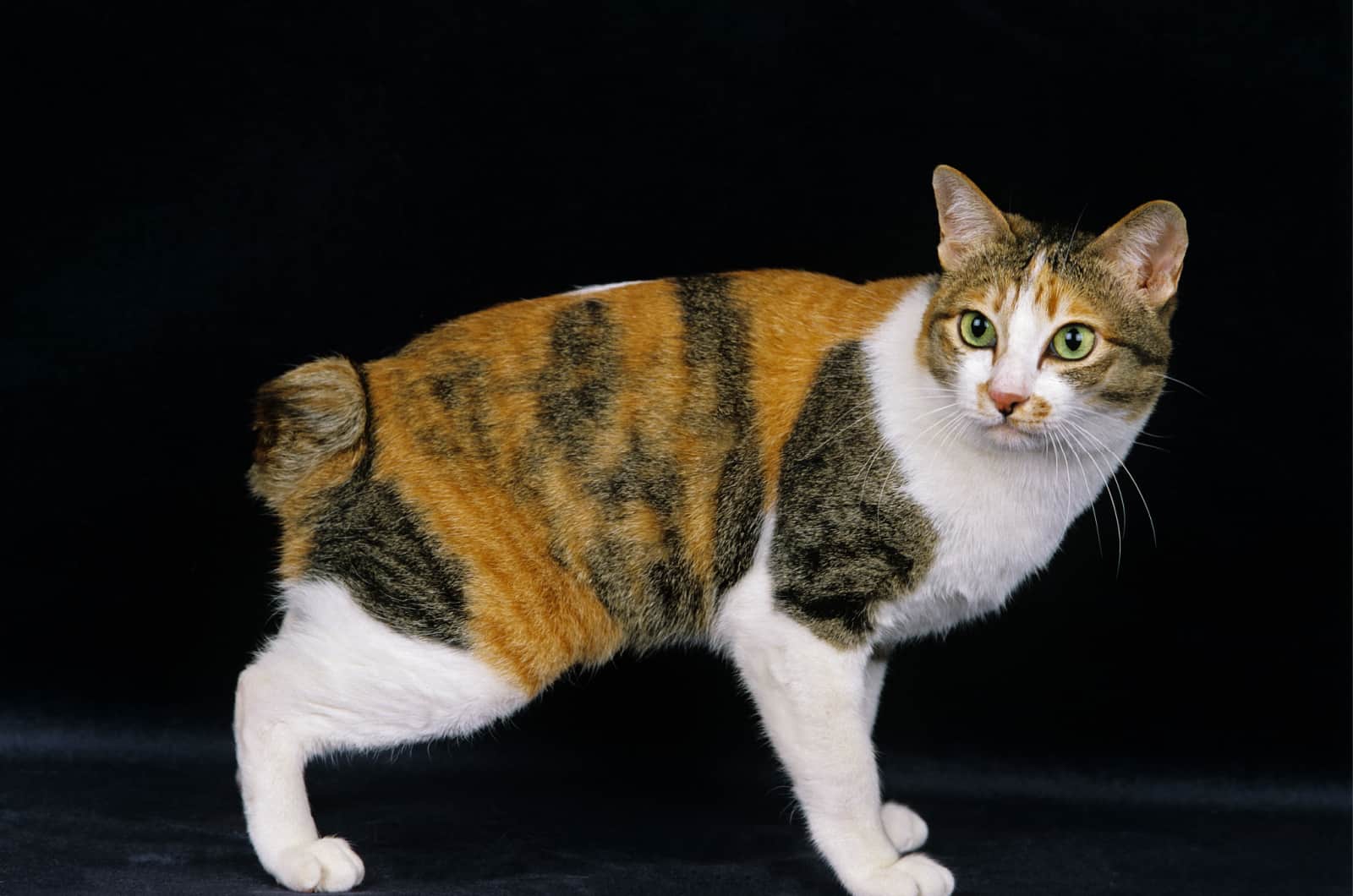
Japanese bobtails are known and loved for their short, kinked tails, outgoing personality, and athletic ability. This intriguing breed is native to Japan but is well-known worldwide.
These lively creatures are excellent companions, especially for youngsters. Japanese bobtails like being the center of attention, and they play an important role in family life. They are also low-shedding, simple to groom, and extremely clever.
| Size | medium |
| Average Weight | 5 to 10 lbs. |
| Average Height | 8 to 9 inches |
| Physical Characteristics | small, fuzzy, tail tufts |
| Personality | playful, intelligent, friendly |
| Origin | Japan |
| Average Lifespan | 9 to 15 years |
More Info About The Japanese Bobtail Breed
The bobbed tail, also called the ‘pom’ of the Japanese bobtail is, of course, its distinctive physical feature. It has the appearance of a rabbit’s tail rather than a cat’s.
The stubby tails of these pets are generally a little more than 3 inches long, coated with tufts of hair, and twisted or kinked to one side. The Japanese bobtail is a medium-sized cat with a robust and muscular body.
Japanese bobtails have two sorts of coats: long and short. The coat of Japanese bobtails can either be solid, bi-color, calico, or tabby, but it is most typically white with colorful spots, known as the ‘van pattern.’
Their long and short coats are both silky smooth, easy to groom, and shed very little. Japanese bobtails are playful, sociable, and extremely intelligent. This breed gets along nicely with children, dogs, and other cats.
Japanese bobtails, unlike other kittens, become active at an early age and stay active for most of their lives. According to the Cat Fanciers’ Association (CFA), these cats have a lot of energy and adore all the playtime they get from you.
Health & Care
This breed is generally easy to groom. Because there is no undercoat, Japanese bobtails, whether short- or long-haired, are not prone to matting and should only be brushed once a week to eliminate dead hairs.
While your pet will require minimum daily maintenance, you will most likely need to brush it more frequently during the spring and fall shedding seasons. This robust, natural breed is generally healthy and disease-resistant.
While the tail of the Japanese bobtail is the product of a genetic mutation, this mutation is not known to cause any specific health difficulties in this breed.
Reputable breeders will examine your kitten for health concerns, but it’s critical to have them screened on a regular basis until they reach adulthood. Some health issues in cats might go unnoticed for a long time.
Check out: Why Do Cats’ Tails Puff Up? 7 Reasons That Might Surprise You
Cymric Cat
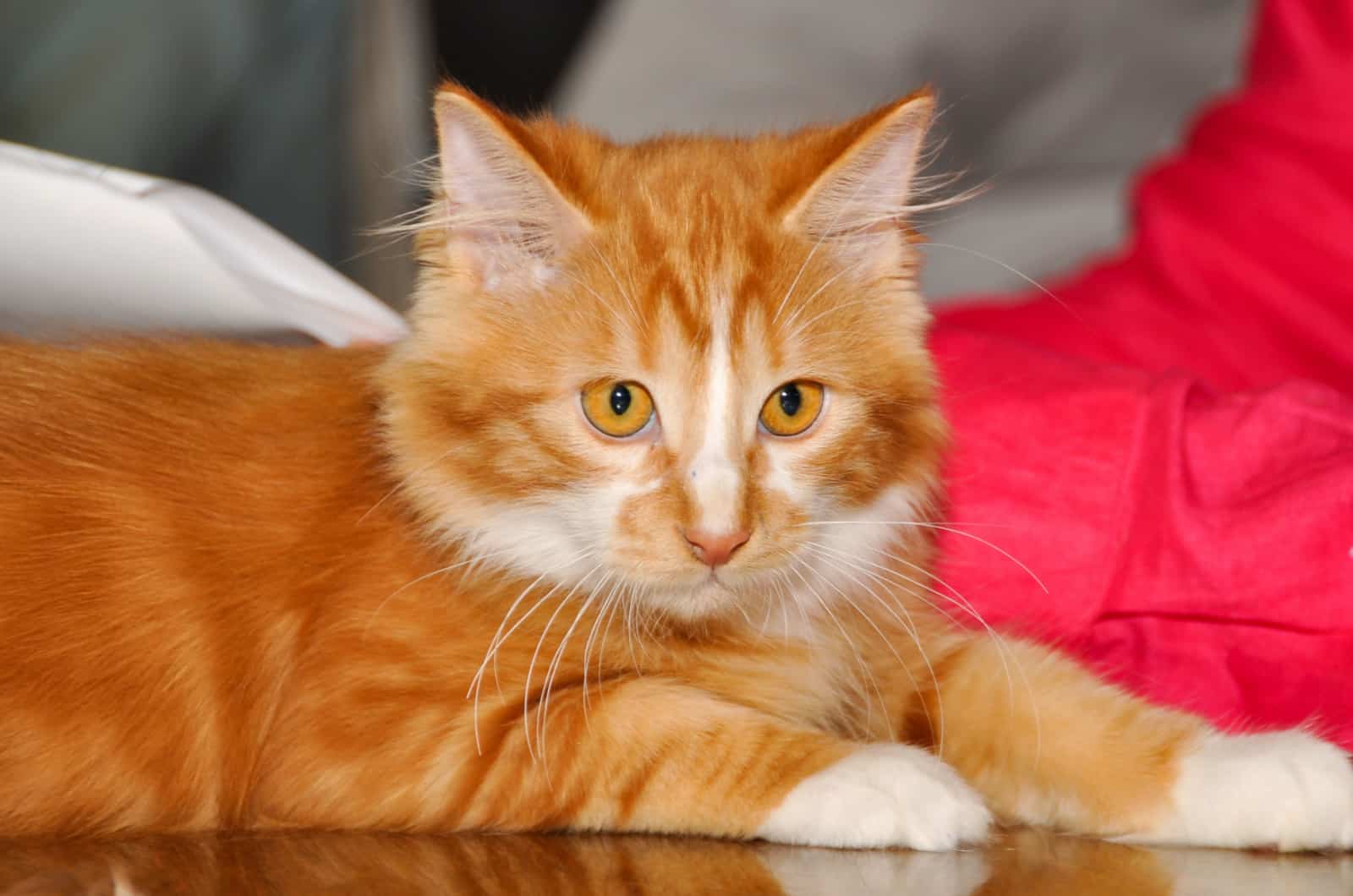
The Cymric is a stocky, strong-boned, medium-sized cat. The Cymric may either look larger than it is, or you may be unaware of how heavy it may be when completely mature.
The Cymric is a rounded cat with a round head, eyes, whisker pads, and rump. You spin me right ‘round, baby, right ‘round… great! Now, the song’s stuck in my head. lol
When viewed from behind, the placement of the ears creates a rocker shape. A Cymric’s back end is taller than its front end, which is visible when it stands.
| Size | medium to large |
| Average Weight | 8 to 12 lbs. |
| Average Height | 11 to 14 inches |
| Physical Characteristics | muscular body, round head |
| Personality | calm, affectionate, playful |
| Origin | Canada |
| Average Lifespan | 9 to 14 years |
More Info About The Cymric Breed
Not all Cymrics are absolutely slender. There are no lumps on completely tailless Cymric cats.
‘Rumpy’ is the name given to these cats. Some Cymric cats are known as ‘stumpies’ because they have a little stump of a tail; they are also called ‘rumpy risers’ because when you place your palm around the rump, the little tail rises.
This small tail may get covered by a fat pad as a rumpy riser ages, and it will no longer rise when handled. Some Cymric kittens have complete tails, while others have partial tails.
The Cymric has long, thick, and dense hair and a double coat. Being calm, kind cats, Cymrics are wonderful companions that enjoy human company.
Despite their calm demeanor, Cymrics like running and playing. They have an unusual stride, which makes them appear to be bowling balls moving around the room.
Health & Care
The Cymrics’ nutrition must be closely monitored in order to keep them in excellent shape. They have a voracious appetite and can soon become overweight.
Daily grooming is required due to their double coat. Proper brushing will maintain the coat’s smoothness since, if brushing is ignored, the undercoat will build up over time.
Because of the thickness of the coat, grooming should be done with special care throughout the shedding season.
The Cymric’s absence of a tail isn’t necessarily a good thing. Some cats have spinal abnormalities that cause neurological symptoms, such as difficulty defecating or urinating, which is another reason why you should always buy from reputable breeders.
American Bobtail
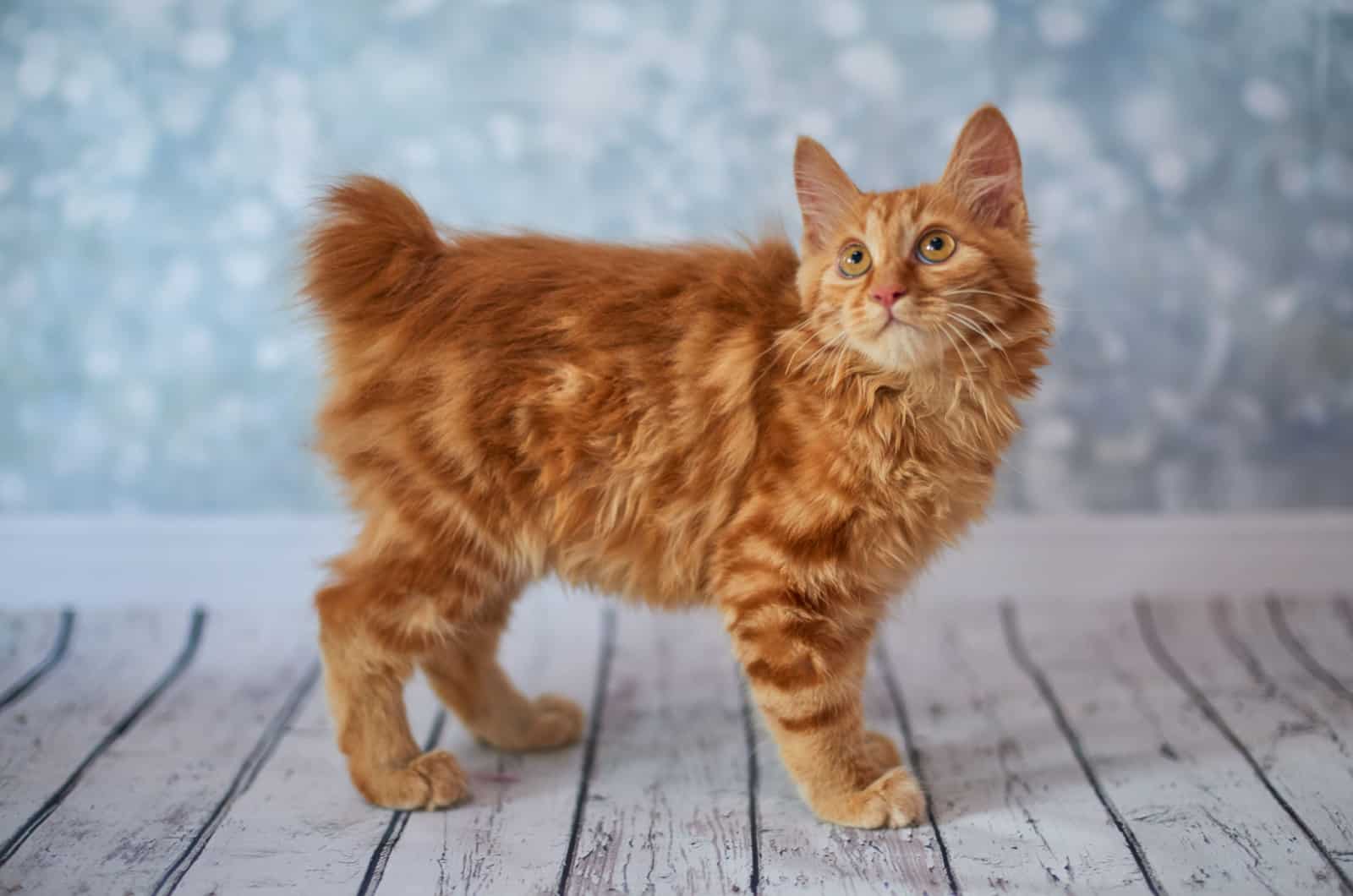
American bobtails are widely characterized by their short bobbed tails, rough looks, and outgoing personality.
Because of their warm and sociable natures, they have been dubbed the “golden retriever” of cat breeds. These cats like being around people and have pleasant, sensitive personalities that make them excellent companions.
| Size | medium |
| Average Weight | 7 to 16 lbs. |
| Average Height | 9 to 11 inches |
| Physical Characteristics | almond-shaped eyes, long back legs |
| Personality | sweet, loyal, intelligent |
| Origin | USA |
| Average Lifespan | 13 to 16 years |
More Info About The American Bobtail Breed
First and foremost, an American bobtail may be identified by its tail. These cats have a short, bobbed tail that is around one-third the size of a regular cat’s tail.
Based on the breed standard, tails vary in length from 1–4 inches and can either be upright, kinked or rounded along the edge. American bobtails have huge, deep-set, almond-shaped eyes that can be any hue.
They have long back legs and a robust, athletic physique, weighing between 7 and 16 pounds. These cats can be sluggish to mature – they can take 2–3 years longer than the average cat to achieve full maturity.
Sweet, loving, and docile are common descriptors for the American bobtail. These pets make excellent lap cats and friends, and they get along well with cats, children, and cat-friendly pet playmates.
American bobtails are intelligent creatures that require mental and physical stimulation. Don’t be shocked if he chirps and trills to indicate that he wants some one-on-one time with you.
Health & Care
Your American bobtail’s grooming requirements are straightforward. Brush this breed’s coat once or twice a week to maintain its smoothness and health. Trim your cat’s nails and clean its ears on a regular basis.
With this easy-going breed, socialization should be a breeze. When introduced to humans and pets at a young age, American bobtails are typically easy to get along with and friendly to new faces.
Your vet should propose a high-quality cat food regimen for your American bobtail. Avoid overfeeding your cat because (as with any other cat breed) it can lead to obesity.
American bobtails, like other cats, are prone to obesity and dental illness, and you can help avoid these problems by keeping your American bobtail healthy and trim, giving it the best diet you can afford, and keeping its teeth sparkling clean.
American bobtails without tails, like some other tailless breeds such as the Manx, might develop spinal or intestinal disorders.
The American bobtail is prone to hip dysplasia as it ages – a congenital illness that can cause lameness and arthritis in the hip joints.
Furthermore, the tailless American bobtail has been observed to develop a spinal disease that may impair fecal control.
Kurilian Bobtail Cat
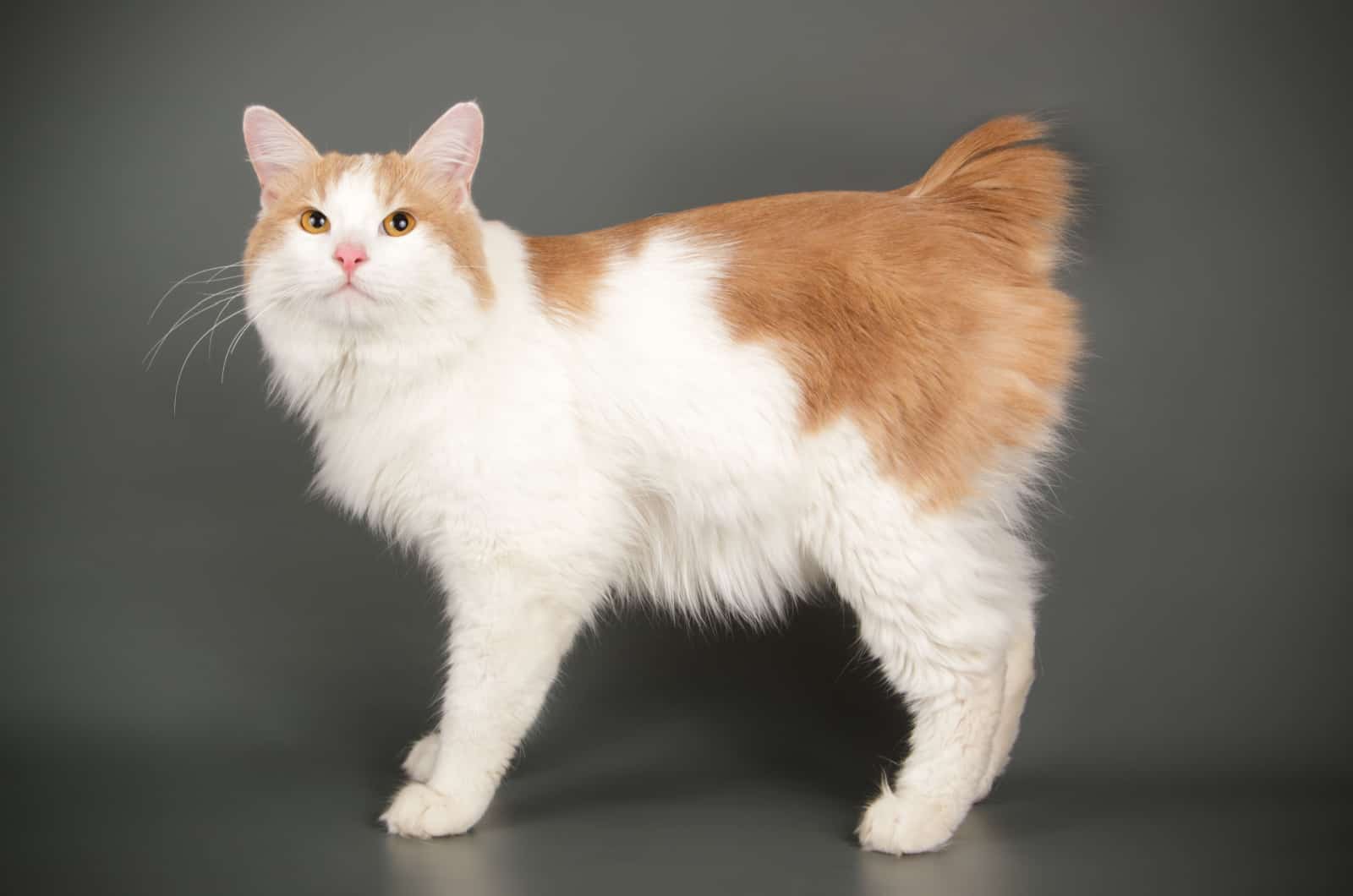
The Kurilian Bobtail is actually a natural cat breed, which means it evolved on its own with little or no interference from humans, specifically on the Kuril Islands in Russia.
The appearance of the Kurilian Bobtail is misleading. The Kurilian may appear tiny at first glance, but when you pick him up, you’ll realize he’s a strong bundle of muscle.
The cats might not achieve their maximum size until they reach five years old. With its bobtail and lengthy rear legs, the Kurilian is frequently compared to the desert lynx.
| Size | medium to large |
| Average Weight | 11 to 16 lbs. |
| Average Height | 10 to 14 inches |
| Physical Characteristics | fluffy, muscular, long back legs |
| Personality | smart, hunters, curious |
| Origin | Russia |
| Average Lifespan | 15 to 20 years |
More Info About The Kurilian Bobtail Breed
Because of its large hind legs, this cat is an excellent jumper, and it is well-known for its hunting abilities. Any rodents (or even small pets) in the area are at risk if you live with a Kurilian bobtail cat.
They also like playing in the water, which is not unusual considering their island background and a water-resistant coat.
This cat is quite busy, but that doesn’t mean it won’t sit down for some petting. It is typically loyal and kind, which makes this cat breed a terrific companion. This is a clever, curious, and independent cat, yet a Kurilian will want to spend time with you.
They usually like humans and are a wonderful choice for households with children and other pets, such as dogs.
However, because this breed is recognized for its hunting abilities, ferrets, hamsters (or other rodents), rabbits, and potentially even birds and aquarium fish may be at risk if a Kurilian is around.
If the cat is permitted to go outside, keep in mind that it may hunt and kill birds.
When a Kurilian bobtail isn’t poised high over its kingdom, it will most likely prefer sitting in your lap or napping on your bed. Test their intellect by teaching them tricks and conveying acts that you also enjoy.
Health & Care
The fine, silky coat of this breed can be short or semi-long and does not tangle easily. All it takes is weekly brushing to eliminate dead hairs and distribute the natural skin oils to keep it clean and healthy. The coat only sheds a little and is resistant to water.
All cats, just like all people, have the potential to acquire hereditary health issues.
Kurilian bobtails are generally healthy. They have no known hereditary health issues; however, because of the breed’s rarity, knowledge of genetic illnesses may be restricted.
Highlander Cat
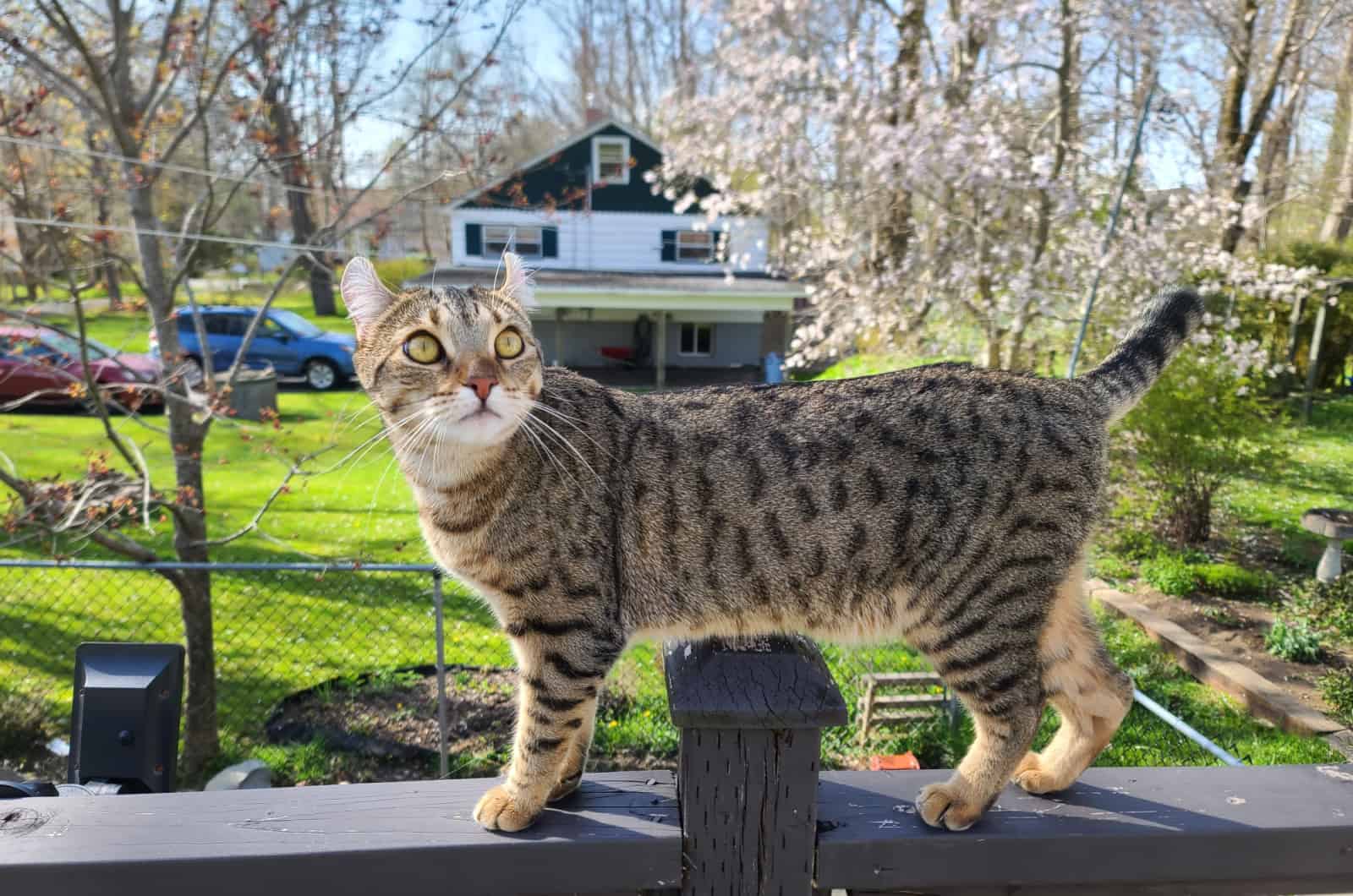
The Highlander is a cross between the beautiful Desert Lynx and the interesting Jungle Curl. Highlanders seem strong and wild; however, they are gentle giants at heart.
They enjoy being the focus of attention, and, like most cats, they are terrific performers, playmates, and nappers.
| Size | large |
| Average Weight | 10 to 20 lbs. |
| Average Height | 14 to 16 inches |
| Physical Characteristics | muscular, curled ears |
| Personality | energetic, playful, friendly |
| Origin | USA |
| Average Lifespan | 10 to 16 years |
More Info About The Highlander Cat Breed
Highlander cats are medium to large in size, with muscular bodies. Most Highlanders have curled ears and short, bob-like tails, which they’re recognized for, but some are born with straight ears and/or long, ‘regular’ tails.
They are tall and broad at the base, with the top third of the ear curling loosely and backward in many Highlanders.
If this breed’s tail is naturally short, it can range from 1 to 6 inches in length. This clever breed is readily taught to retrieve, walk on a leash, and sit. And, don’t be shocked if they greet you at the door holding a toy in their mouth.
Highlanders are a very energetic, robust breed that enjoys running, playing, and chasing. They are friendly and tolerant with children, who are frequently their favored playmates. Cat trees and sturdy toys will keep these high-energy felines entertained.
Highlanders are friendly and get along with everyone, even dogs and other pets. They like being the center of attention, and they will fool around and perform tricks to amuse their owners.
Health & Care
Short-haired Highlanders should be brushed once a week, and long-haired Highlanders up to three times a week in order to remove dirt and loose hair.
It’s also a good idea to trim your cat’s claws every month to keep them from digging into the soles of their paws. Also, if the nails are too long, they will get caught easily and break.
A lot of cats become overweight easily, and those extra pounds can lead to other health risks, including arthritis, diabetes, and heart disease.
Your vet is the best source for tips on keeping your cat at a healthy weight.
Mekong Bobtail

The Mekong bobtail cat is a natural cat breed, which means it came into existence without human influence. These felines are recognized for being loyal, friendly, and clever.
The Mekong bobtail breed is native to Southeast Asia and is distinguished by its characteristic Manx-style bobtail.
This is a kitty that thrives on being around humans, and it will build good and long-lasting ties with you. Along with its loving temperament, the breed is also a superb athlete!
| Size | medium |
| Average Weight | 8 to 10 lbs. |
| Average Height | 7 to 9 inches |
| Physical Characteristics | small, resembles the Siamese pattern |
| Personality | energetic, smart, loving |
| Origin | Thailand |
| Average Lifespan | 15 to 19 years |
More Info About The Mekong Bobtail Breed
Mekong bobtails are typically medium-sized cats, although the exact size may differ as is usually the case.
The Mekong bobtail is an extremely devoted breed of cat, known for immediately forming loving and deep ties with the people in its life. Don’t be shocked if your Mekong bobtail insists on following you around the house!
In fact, if your house is unoccupied for long periods of time during the day, the breed may become lonely. This is unquestionably a feline that thrives in a lively home with lots of activity.
Mekong bobtails also like being around youngsters, which is beneficial because they have a lot of energy and will require regular play sessions.
The breed adores climbing, so be sure to provide a cat tree in your house and, preferably, secure furniture that the cat can effectively climb.
Health & Care
Mekong bobtail cats are regarded as a low-maintenance breed when it comes to grooming. These short-haired cats only require brushing once a week; nonetheless, grooming sessions should also be used to bond with your cat.
The majority of Mekong bobtail cats are climate-tolerant. During the hotter months, though, make sure there’s enough shade and fresh water available at all times.
Mekong bobtails are usually considered healthy cats, although be sure to take this cat to the vet for regular checkups.
Some of the more prevalent health issues that the Mekong bobtail may face include problems with the eyes and gastrointestinal issues.
As with other cats, it’s critical to keep your Mekong bobtail’s routine vet exams up to date in order to spot any health issues early. Your veterinarian can assist you in developing a care routine that will keep your cat healthy.
Owyhee Bobcat
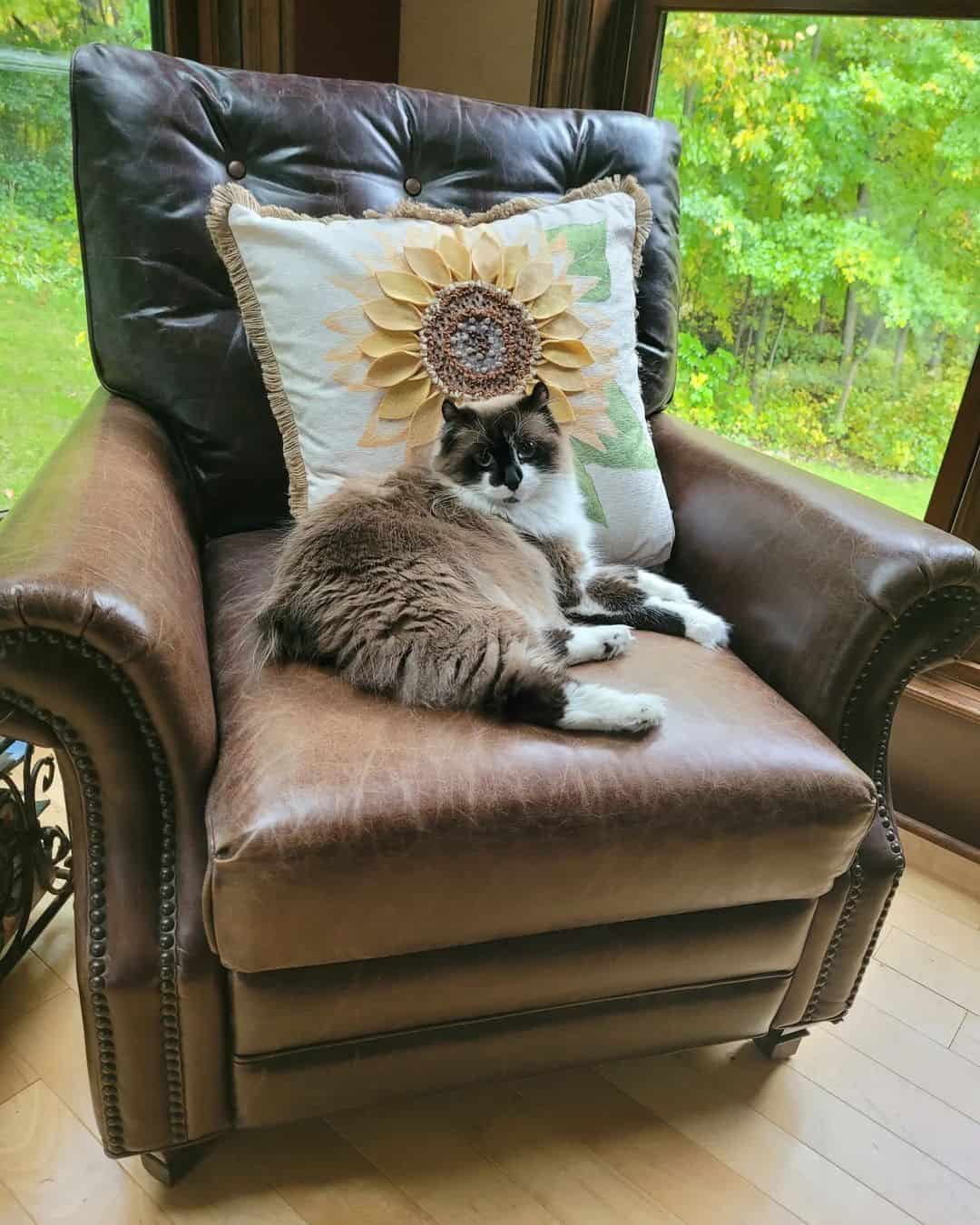
Photo from: @bentleybutton21
The Owyhee Bobcat is a hybrid between the Siamese and the Manx breeds, and it actually has morphological characteristics of both.
It’s still listed under the category of experimental cat breeds. The most distinguishing characteristics of the Owyhee are its distinct coloration, blue eye color, muscular build, and stumpy tail; however, some have no tails at all.
| Size | medium |
| Average Weight | 8 to 15 lbs. |
| Average Height | 8 to 11 inches |
| Physical Characteristics | blue eyes, soft fur |
| Personality | friendly, vocal, smart |
| Origin | USA |
| Average Lifespan | 10 to 15 years |
More Info About The Owyhee Bobcat Breed
The Owyhee Bobcat is a hybrid between the Siamese and Manx breeds. Aside from the blue eyes and stumpy or short tails, their color and structure distinguish it. It is available in all colorpoint patterns and colors.
The Owyhee Bobcat has a lively, sweet-tempered attitude, and it is often social. This breed is quite noisy and meows frequently, enjoys being a member of a family, and is as devoted as a dog.
Its demeanor is also reported to be more like that of a dog than that of a cat. It is incredibly intelligent, and it can be trained to sit, lie down, and retrieve a ball.
They get along nicely with other animals, such as dogs; however, some female cats are territorial and violent against other animals.
Health & Care
Some of these cats have thick fur. Others are dressed in short jackets. Many are somewhere in the middle. As a result, the quantity of grooming they require varies greatly.
No matter how long their coat is, these cats should be groomed at least twice a week. This aids with the removal of superfluous fur as well as debris and dirt. It also disperses their natural oils, which can help keep their fur and skin healthy.
However, they are susceptible to progressive retinal atrophy, which can lead to blindness in the long run. This is a genetic disorder for which a DNA test is required.
As a result, many breeders will screen their cats for this genetic mutation before breeding, thus, eradicating this sickness from their litter.
The same gene that generates blue eyes in Siamese cats can also induce a congenital eye disorder that impairs the cat’s vision. However, for the most part, this feature has been bred out. This issue can still afflict your Siamese Manx if he or she has blue eyes.
This cat could also be more susceptible to lung infections, particularly as a kitten. As a result, when kittens are young, a safe, clean environment is very crucial.
Toybob Cat
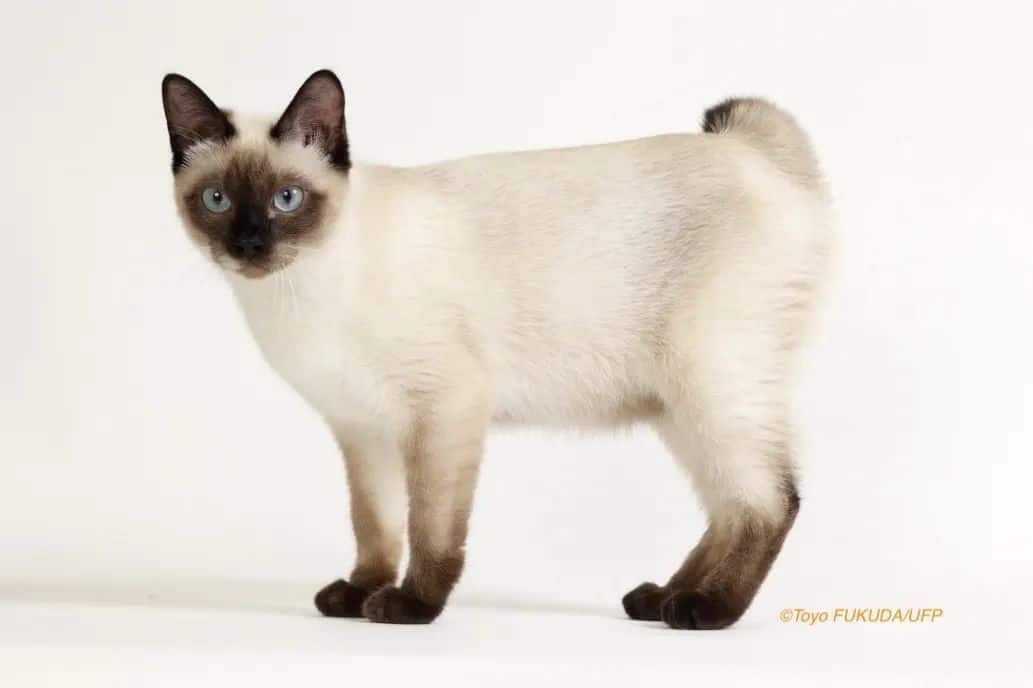
Photo from: @libertybell_breed
Toybobs are little cats with large hearts and endearing personalities. They make terrific pets and cuddly friends since they are affectionate, playful, and amusing.
| Size | small |
| Average Weight | 3 to 6 lbs. |
| Average Height | 7 to 10 inches |
| Physical Characteristics | small body, big eyes |
| Personality | friendly, suitable for people of all ages |
| Origin | Russia |
| Average Lifespan | 14 to 20 years |
More Info About The Toybob Breed
The Toybob is a tiny cat that has a compact, muscular physique and a bobbed tail. The Toybob’s tail is, at best, one inch long, and it can stretch all the way to the hock. It’s bobbed in a variety of kinks and curves.
A refined, wedge-shaped head with round features, a square-shaped nose, medium-tall ears, and big, expressive eyes are further distinguishing characteristics of this breed.
Toy Bobs are excellent pets due to their gentle, peaceful attitude and cheerful demeanor. They’re friendly and suitable for almost everyone, from families with children to solitary seniors.
Health & Care
Regardless of its length, a Toybob’s coat requires little care. Brushing once or twice a week should be enough to remove dirt and loose hair. Brushing should be done more often during intervals of seasonal shedding.
The Toybob’s general health is rather good, owing to the harsh climate in which the breed evolved. Furthermore, the continuous use of local Russian Domestic cats in breed development ensures that the breed retains exceptional genetic variety and health.
The breed has no established health or hereditary issues and is expected to survive for more than 15 years.
See also: Why Do Cats Have Tails? 13 Questions & Answers
Final Thoughts
Well, there you have it! The Manx is not the only cat breed with no tail, which might have come as a surprise to some people.
Usually, when we think of a cat breed with no tail, we think of Manx cats. I suppose it’s because they’re the most popular and widely-known cat breed with no tail. However, there are also nine other cat breeds that have no tails.
All of them are extremely cute and mostly belong to the small-size group, but some, like the Highlander cat, are either large or medium-sized, like the Mekong Bobtail cat.
Some of them have very short tails, and some breeds have tails that are up to 4 inches long. Still, they are all recognized and considered a cat breed with no tail.
All in all, there are not many health issues associated with a lack of tail length that is life-threatening for these cat breeds, and in terms of temperament and general care, these cats are not that different from any other cat breed.
The main difference between a cat breed with no tail and a regular cat breed is the cuteness of wiggling those stubby little tails!

